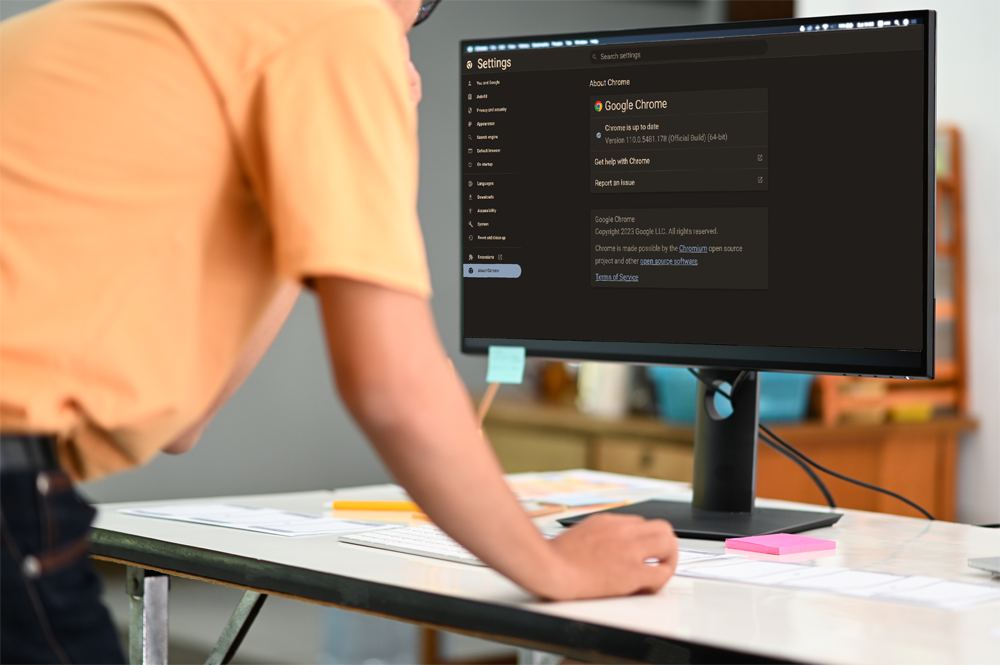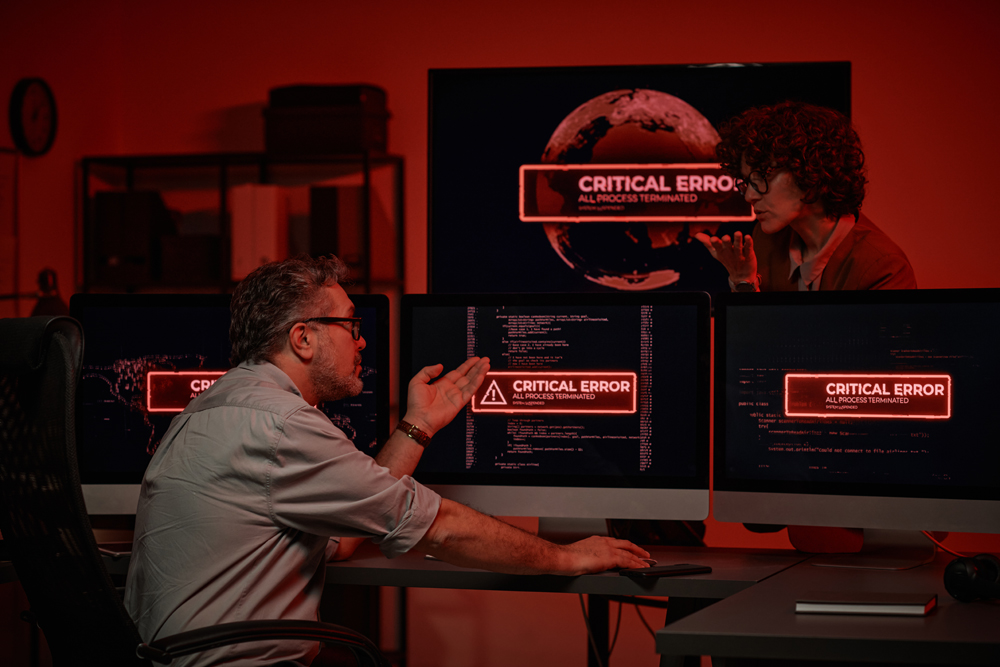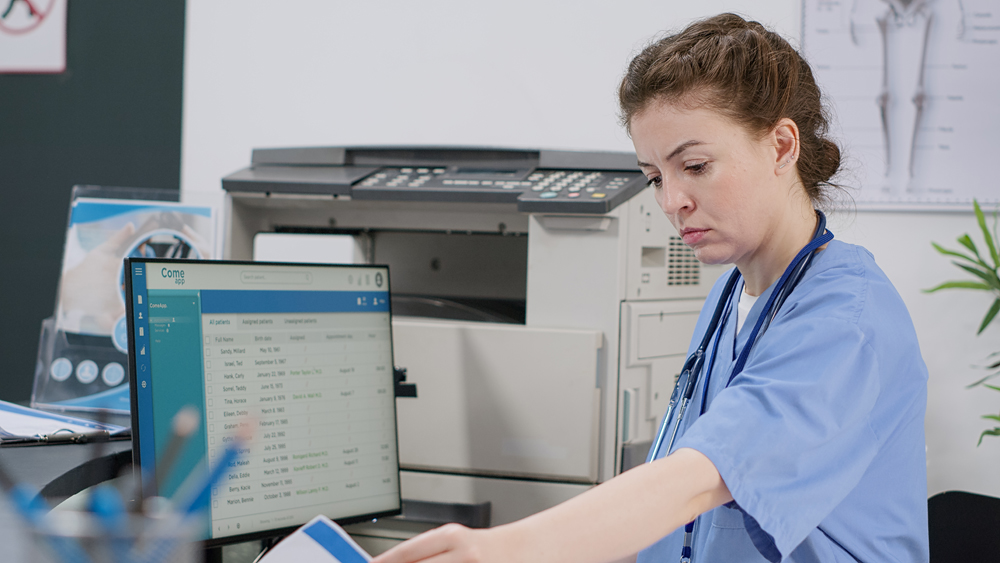The importance of keeping software up-to-date is paramount. But what happens when outdated software is running on a system? The risk of running outdated software can be catastrophic, from security breaches to reputational damage. It’s no wonder why a single instance of an unpatched program can cause panic and chaos in any organization. So let’s explore the risks associated with outdated software and how to stay safe against potential threats.
Table of Contents
Definition of Outdated Software
Software is considered outdated when it’s not being developed or updated anymore. Outdated software programs can be vulnerable to security threats, as they no longer receive updates or patches from their creator. Outdated software solutions can also lead to compatibility issues, as they may not run on more modern systems with updated operating systems and hardware. In short, obsolete or unsupported software can put you at risk of data loss, security issues, and other serious problems.
Using outdated software can be a severe risk to your system and data, so it is essential to stay up-to-date on the latest versions of your software. We’ll look at the potential threats below from a security perspective to learn more about the risks.

Security Risks
Security risks are one of the most concerning aspects of running outdated software. The latest software versions often feature robust security measures to protect your system from malicious attacks and data breaches. You risk missing out on these critical security updates by running an older version, leaving your system open to potential threats. Additionally, hackers may target outdated software specifically because they know it is more likely to be vulnerable due to its lack of protection. Upgrading outdated software as soon as possible ensures your system remains secure.
When protecting your system from malicious attacks and data breaches, running outdated software is not an option. Upgrading any outdated software immediately should be your top priority. And if you think that’s important, wait until you hear about the risks associated with unpatched software!
Unpatched Software
Unpatched software is arguably even worse than running outdated software. Unpatched software is any version of a program or application that has not been updated to the latest release. It could be missing critical security patches, leaving your system vulnerable to malicious attacks and data breaches! These patches are often released in response to newly discovered vulnerabilities in older software versions, so if you’re running unpatched software, you’re opening yourself up for potential cyber-attacks.
To ensure your system remains secure and free from malicious threats, it’s essential to check for updates and patch any unpatched software regularly. It’s also a good idea to set up automatic update notifications to avoid missing out on crucial security patches. Don’t forget that sometimes the consequences of running unpatched software can be much more severe than merely having your data compromised – it could even put the rest of your network at risk too! So ensure you stay vigilant with patching and upgrading your programs and applications as soon as possible.
Security Breaches
Security breaches are one of the most significant risks of running outdated software. Outdated software is not only missing important security patches, but it’s also more vulnerable to malicious attacks and data theft. Hackers are constantly looking for ways to exploit any weaknesses in your system. So, if you’re running an older version of a program or application, you’re at risk of being targeted.
Regularly checking for updates and patching any unpatched applications will help reduce the chances of experiencing a security breach. It’s also a good idea to set up automatic update notifications to stay ahead of potential threats. These steps will help protect your data from falling into the wrong hands and keep your network safe from malicious attacks.
Reputational Damage
Reputational damage is a severe consequence of running outdated software, since the public’s opinion of your business can make or break it, and obsolete software could easily lead to negative publicity.
For example, suppose an outdated system experiences a major security breach from a cybersecurity attack and confidential customer data is leaked. Your company decides not to alert its customers immediately and they end up finding out later on. If handed poorly this could spiral out of control with a loss of trust and credibility while damaging your company’s reputation. This can lead to lost customers, decreased sales, and even legal action against you from disgruntled customers.
The best way to avoid reputational damage is to stay on top of updates and unpatched patch applications. Keeping up with the latest software will ensure your system remains secure and your reputation intact. Don’t let outdated software vulnerabilities put your business at risk—take measures now to protect yourself and maintain an excellent public image!

Browsers
Outdated browsers can be a huge security risk. Browsers like Google Chrome are the main way we interact with the web. Using an outdated browser, you’re likely missing important security patches and updates that protect your data from malicious attacks.
Outdated browser plugins are also a risk, as they can quickly become compromised by hackers. This can lead to data theft, malicious code injections, and even malware attacks. Regularly updating your browser and any installed plugins are essential to protect yourself from these risks. A secure browser will help keep your data safe and protect you from malicious attacks.
Security Lapses
Security lapses can be a serious risk when running outdated software. Your system can become vulnerable to attacks and data theft without regular updates. Hackers are always looking for ways to exploit any weaknesses in your system, so failing to keep up with the latest updates means putting yourself at risk of experiencing a security lapse.
It’s easy to overlook software updates due to their mundane nature, but doing so could put your system at risk. Don’t let security lapses catch you off guard—take the necessary precautions now, and keep your system safe!
Outdated Technology
Outdated technology can be a real headache! Not only is it more susceptible to security threats and malicious attacks, but it can also lead to decreased performance, compatibility issues, and a lack of access to the latest features. Additionally, running outdated technology can limit your ability to keep up with changing trends in the market—which is why it’s so important to stay on top of updates and patch any unpatched applications.
By upgrading to the latest version of a program or application, you can benefit from improved performance, enhanced security, and access to the latest features.

Impact on the Entire Network
An unpatched machine may open a door for malware attacks or viruses to infect other computers on the same network. Security vulnerabilities like these could lead to data loss, system crashes and cause widespread service disruption and financial losses due to downtime.
Moreover, when multiple machines run outdated software on the same network, they can bog down each other’s performance and create communication problems that slow down productivity. This can seriously impact your business operations, leading to decreased efficiency and customer dissatisfaction.
The best way to protect your entire network from these risks is by keeping its components up-to-date with the latest software patches and critical software updates.
By staying up-to-date with the latest software patches and updates, you can ensure that your entire network is secure, reliable, and performs optimally. This will lead to increased productivity and customer satisfaction. And next, we’ll explore how this applies specifically to the healthcare industry – stay tuned!

Healthcare Industry
In the Healthcare Industry, running outdated software can have serious consequences. For example, obsolete systems can leave patient data vulnerable to hackers and put confidential information at risk of exposure. Furthermore, these outdated systems may not adequately process new protocols and regulations, leading to compliance issues. Finally, running old software can result in slower system performance, hindering healthcare providers’ ability to access and analyze patient data when needed quickly.
Healthcare organizations need to stay up-to-date with the latest software patches and updates. This will ensure that their systems remain secure from cyber threats and compliant with industry regulations while providing optimal performance for medical professionals. By keeping their software up-to-date, healthcare providers can ensure they provide the best care possible for their patients—and ultimately help save lives!
Breaches in security can happen in any industry and compliance matters. The healthcare sector is particularly vulnerable due to the sensitive nature of patient data, and many institutions do not take IT security as seriously as they should.
Wrapping Up
Taking the time to upgrade and update your system is invaluable. It will keep your system secure and compliant with industry regulations, improve its performance, and reduce the chances of unexpected downtime due to outdated software or hardware issues. Investing in regular upgrades and updates may seem like a hassle at first, but it’s well worth the effort—so ensure you’re keeping up with all available updates as soon as possible!
Taking unnecessary cybersecurity risks is not a good idea, especially in the healthcare industry. Running outdated software can lead to major issues, leaving your network vulnerable to malicious attacks, data loss, slow speeds, and compliance issues. Stay up-to-date with the latest software patches and updates to maintain optimal performance and keep your system secure from cyber threats.
Contact us today to give your business a competitive edge and stop taking unnecessary risks!


Recent Comments